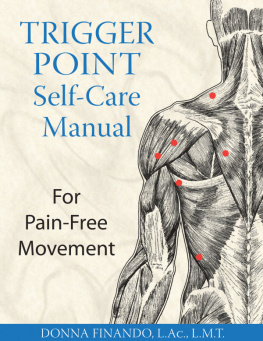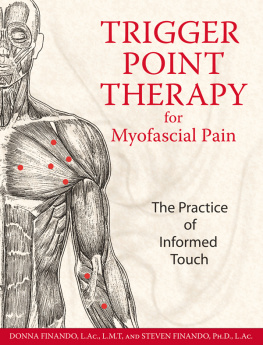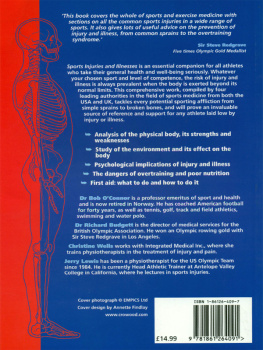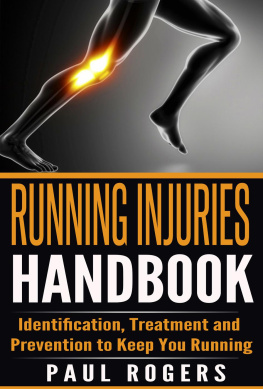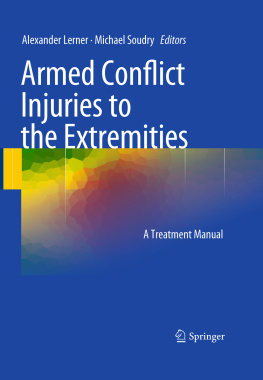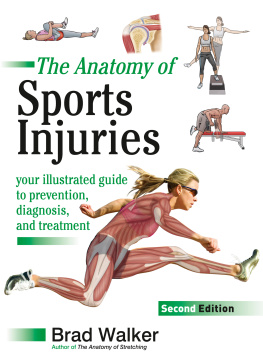Donna Finando - Trigger Point Self-Care Manual: For Pain-Free Movement
Here you can read online Donna Finando - Trigger Point Self-Care Manual: For Pain-Free Movement full text of the book (entire story) in english for free. Download pdf and epub, get meaning, cover and reviews about this ebook. year: 2005, publisher: Healing Arts Press, genre: Romance novel. Description of the work, (preface) as well as reviews are available. Best literature library LitArk.com created for fans of good reading and offers a wide selection of genres:
Romance novel
Science fiction
Adventure
Detective
Science
History
Home and family
Prose
Art
Politics
Computer
Non-fiction
Religion
Business
Children
Humor
Choose a favorite category and find really read worthwhile books. Enjoy immersion in the world of imagination, feel the emotions of the characters or learn something new for yourself, make an fascinating discovery.
- Book:Trigger Point Self-Care Manual: For Pain-Free Movement
- Author:
- Publisher:Healing Arts Press
- Genre:
- Year:2005
- Rating:4 / 5
- Favourites:Add to favourites
- Your mark:
Trigger Point Self-Care Manual: For Pain-Free Movement: summary, description and annotation
We offer to read an annotation, description, summary or preface (depends on what the author of the book "Trigger Point Self-Care Manual: For Pain-Free Movement" wrote himself). If you haven't found the necessary information about the book — write in the comments, we will try to find it.
Contains at-home techniques to promote healing and self-awareness of the bodys musculature
Explains how to relieve pain using manual massage in conjunction with small physio balls
Includes an illustrated treatment reference section organized by region of the body
The vast majority of physical injuries incurred by active people begin with muscular injuries that are not addressed by the conventional medical approach to orthopedic care. Injuries of this type are generally too minor to warrant splinting, casting, or medication and often do not prevent participation in physical activities. They do, however, produce noticeable discomfort and, over time, frequently lead to more severe injuries.
In Trigger Point Self-Care Manual Donna Finando presents methods for the healing and prevention of musculature injuries. She identifies the causes of and remedies for areas of muscular tightness and restriction and details many self-care techniques, including precise self-massage, stretching, and the use of wet heat and/or ice. In the fully illustrated reference section, organized by body part, she identifies the pain associated with trigger points in each muscle of the body and provides instructions for palpating, treating, and stretching the muscle in order to release it.
Donna Finando: author's other books
Who wrote Trigger Point Self-Care Manual: For Pain-Free Movement? Find out the surname, the name of the author of the book and a list of all author's works by series.

